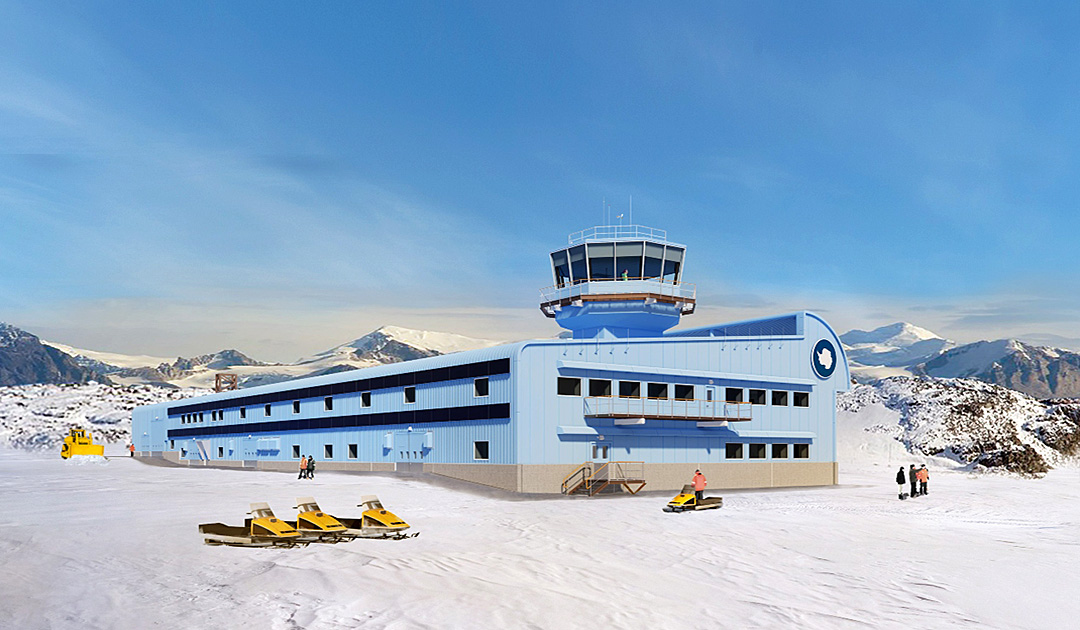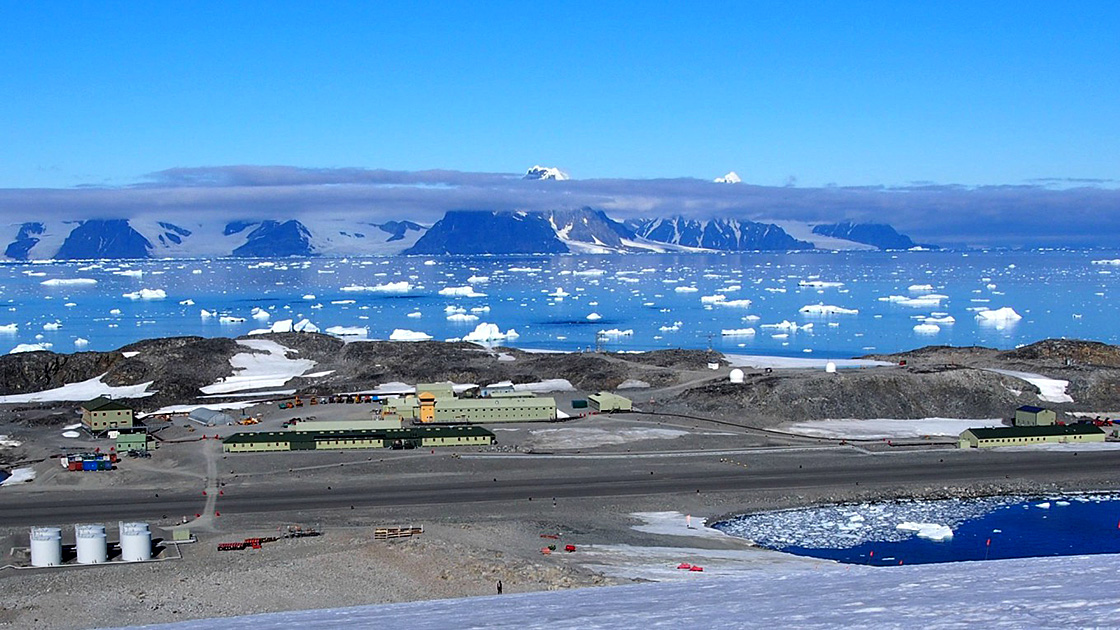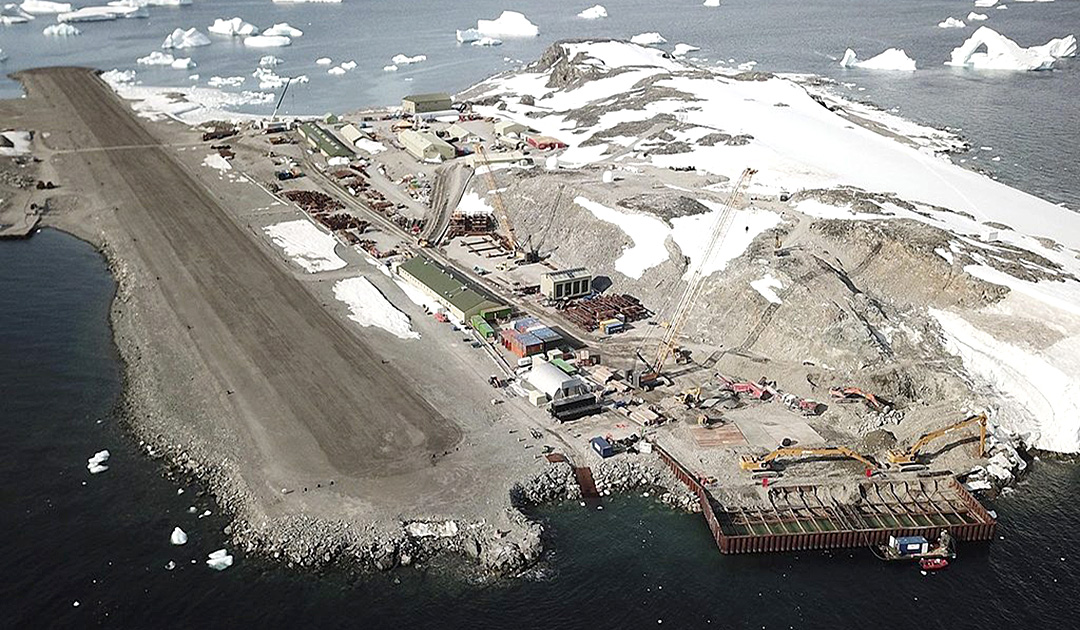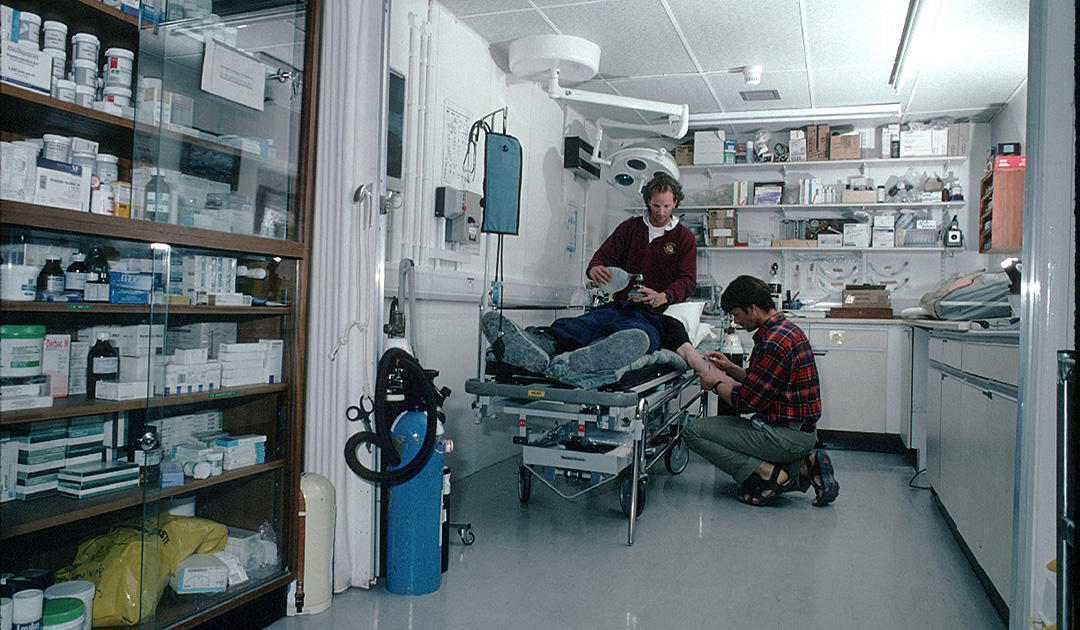
At Rothera Point, at the southern end of Adelaide Island, lies the largest research station of the British Antarctic Survey (BAS). The station is located on a rocky promontory of the island and has been manned permanently since 1975. It is in operation all year round. A wide range of scientific research is conducted in and around the station, including life sciences, earth sciences, glaciology and meteorology. The “Rothera” station is also an important logistics centre that supports all BAS activities in Antarctica..

Significant investment were needed to modernise, update and restore the station’s infrastructure. The station consists of several separate buildings spread across the site. Many of them have reached the end of their economic life, which has driven up maintenance costs. The aim of the modernisation is to reduce operating costs while maintaining the current scientific activity.
This is achieved by replacing aged buildings with modern facilities. In addition, the rooms can be used more flexibly. This should minimize future maintenance, improve energy efficiency, and reduce snow removal and maintenance costs.

The operations building, called The Discovery Building, is expected to be operational in 2023. The two-story, 4,500-m2 building houses the field expedition preparation area, a medical facility, offices, recreation rooms, workshops and areas for plants. The interior has open work areas and a friendly colour scheme to create an attractive and practical space for researchers.

“Rothera” station in numbers (BAS information)
The “Rothera Research Station” was built in 1975 on a rocky outcrop at the southern tip of the Wormald Ice Piedmont and is located on Adelaide Island west of the Antarctic Peninsula.
Adelaide Island is located 1,860 km south of the Falkland Islands and 1,630 km southeast of Punta Arenas in Chile. The 140 km long island is mountainous and heavily glaciated. Its highest peak is 2,565 meters.

The station can be reached by air or sea. Today most people fly to “Rothera” by British Antarctic Survey plane, a “Dash 7”. Either in five hours from Stanley in the Falkland Islands or from Punta Arenas, Chile, in four and a half hours.
BAS ships bring passengers and cargo to “Rothera” at least twice a southern summer. The cruise from Stanley takes approximately four days. Supply ships are crucial as they bring important supplies from food, fuel, and scientific equipment to vehicles, building materials, and personal possessions.

The station is in operation all year round. In the summer, the crew peaks at just over 100, while in the winter months from April to mid-October, a 22-member team continues the scientific work and maintains the infrastructure of “Rothera”.
The station staff includes marine and terrestrial biologists, meteorologists, electronics engineers, a dive officer and boat officer, a cook, a doctor, vehicle and generator mechanics, electricians, plumbers, construction workers, field assistants, communications managers, and a station management team.

The employees eat together in the central dining room. Lunch and dinner are prepared by the chefs. On Saturdays, there is a more formal dinner. Dress is smart casual and everyone enjoys a multi-course meal. Although the cooks don’t have access to fresh ingredients, they prepare nutritious, high-quality meals every day.

Heiner Kubny, PolarJournal





